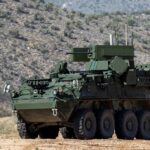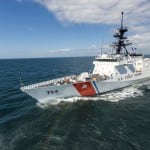NAVSEA Standing Up. Naval Sea Systems Command has begun reconstituting its workforce as it recovers from the horrific shooting Sept. 16 that left 12 people dead, the command says. NAVSEA
 |
| Washington Navy Yard |
said it expects to be able to conduct all necessary functions, including the awarding of contracts. But it remains unclear when those who work in building 197, the site of the rampage at Washington Navy Yard, will be able to return to their offices. Some have said it could be weeks before they expect to return to the building. Building 197 is still an active crime scene under investigation by the FBI, and once that is complete the facility “will likely require extensive rehabilitation” to repair the damage, NAVSEA says. In addition to the 12 victims, the perpetrator was also killed, but not until after a protracted gun fight with law enforcement inside the building. NAVSEA is asking employees to work from home as it looks to set up temporary facilities at the Navy Yard and other locations.
Lockheed Martin On White House Export Council. President Barack Obama has appointed Lockheed Martin President and CEO Marillyn Hewson to his Export Council designed to increase the international market for American products to grow the economy. Hewson was named Thursday along with six other executives from companies stretching across the economic spectrum. "As we recover from the worst economic crisis of our lifetimes, our top priority must be rebuilding an economy where everyone who works hard can get ahead and I’m confident these well qualified individuals will help us do just that,” Obama says in a statement.
Socialization of Biometrics. Apple’s release this month of the iPhone 5s, which includes a fingerprint sensor as the login ID, is a watershed moment in the socialization of biometric technologies, according to many of the industry officials at the annual Biometrics Consortium Conference hosted by AFCEA in Tampa, Fla., last week. “Apple has finally put the icing on the cake but the cake has been baked for a while,” says Joseph Atick, chairman of the Identity Council International and the former chief of the biometrics company Identix. Atick and others believe that Apple’s announcement not only begins to introduce the use of biometrics to the masses, but will help eliminate the association of fingerprints with criminal booking. Moreover, these officials believe that the socialization of biometrics with everyday consumer products will open the door to higher end applications in consumer and government processes and services.
FBI Happy With NGI. The implementation of FBI’s Next-Generation Identification System (NGI) continues to go well with higher accuracy and faster response times than the predecessor Integrated Automated Fingerprint Identification System, a bureau official says at the Biometrics Consortium Conference. Fingerprint checks with NGI are 99.6 percent accurate versus 92 percent with the legacy IAFIS system, says Brian Edgell, chief of the NGI Program Implementation Transition Unit within the FBI’s Criminal Justice Information Services Division. In August routine checks against NGI by law enforcers resulted in 30,159 fugitives being identified, he says. The deployment of a latent print and palm print capability to NGI in May has also resulted in higher accuracy and has also produced nearly 700 new investigative leads related to improvised explosive devices in theater, he says. Lockheed Martin is the prime contractor for NGI.
Latest ABIS Upgrade Live. The Army Program Management Office for Biometrics in August went live as scheduled–albeit temporarily–with the delivery to the Defense Department’s Biometrics Identity Management Activity of the latest version of the Automated Biometric Identification System, ABIS 1.2. The upgrade includes an expansion to 18 million biometric records from the current 10 million, and an increase in daily transaction capability to 30,000 searches versus the current 12,000 to 15,000. ABIS 1.2 was tested for 10 days and met requirements, an Army spokesman says, but the system has been returned to the 1.0 version to incorporate operational enhancements related to joint and interagency information exchange as well as interfaces that have evolved in a wartime environment,” he tells Defense Daily via email. He adds that the return to ABIS 1.0 is temporary. Northrop Grumman is the prime contractor for ABIS.
Last Day. Tara O’Toole, undersecretary for Science & Technology at the Department of Homeland Security, leaves her position today after nearly four years on the job. O’Toole joined the department early in 2010. O’Toole departs at a time when the department has a number of leadership vacancies, including the top spot, secretary. Dan Gerstein, deputy undersecretary of S&T, will serve as the acting branch chief until a successor is confirmed by the Senate.
Orbital’s Cygnus. Orbital Sciences completes its fourth Delta V orbit-raising burn Sept. 20 to raise Cygnus’ orbit to within four kilometers of the International Space Station’s (ISS) orbit altitude, the company says on Twitter. Orbital Sept. 19 performs its third Delta V burn, burning for 189 seconds as part of NASA’s Commercial Orbital Transportation Services (COTS) program. If necessary, an additional burn may be conducted Sept. 21 to “fine tune” Cygnus’ orbit. Sept. 22 was planned to be a busy day for the Cygnus program as Orbital has rendezvous, grapple and berthing with the ISS scheduled. The remaining eight demonstrations and a series of smaller approach delta velocity burns were planned to be carried out Sept. 22 prior to capture by the ISS station crew and berthing with the station. Once the final demonstration maneuver is deemed successful, NASA will give approval for the approach to within 10 meters of the station where Cygnus will be grappled by the robotic arm and guided to its berthing port. COTS is NASA’s program to help commercial industry develop privately operated space transportation systems.
LM and ISC2. The Air Force awards Lockheed Martin a $20 million contract modification to continue supporting the air, space defense and missile warning missions for the North American Aerospace Defense Command (NORAD) Cheyenne Mountain Complex, according to a company statement. The modification is to the Integrated Space Command and Control (ISC2) program and is also the second option exercised from the original contract awarded in October 2012. Under the sustainment contract, Lockheed Martin supports ISC2 space, air defense and missile warning missions, ensuring that data is seamlessly shared between those and other command and control (C2) systems.
Minuteman III Test Launch. The Air Force schedules an operational test launch of an unarmed Minuteman III ICBM for Sept. 22 between 6 a.m. and 12 p.m. EST from Vandenberg AFB, Calif., according to a service statement. The missile’s unarmed re-entry system is expected to travel approximately 4,200 miles to the Kwajalein Atoll in the Marshall Islands. The information obtained during test launches enables planners to ensure continued sustainment of the ICBM program. The last Minuteman III test launch from Vandenberg took place May 22.
DHS Acquisition. The Professional Services Council (PSC)–the national trade association for government technical services–presented its report on improving the acquisition process to the House Homeland Security Committee on Friday. PSC President Stan Soloway says the report is particularly important to the Department of Homeland Security as it enters its second decade. The report, released in early September, suggests creating a technology management career field in the government, expanding the authority of the Office of Federal Procurement Policy beyond its contract function, and evaluating award outcomes.
Accenture Acquires ASM Research. Accenture Federal Services–a subsidiary of Accenture LLP [ACN]–announced on Sept. 18 that it has acquired ASM Research, which provides information services to government clients. Accenture says the acquisition will expand its business in military healthcare IT, where ASM has a large footprint. Accenture has not disclosed the terms of the merger.
Professionalizing Cybersecurity. A new report from the National Research Council says that cybersecurity should not become a professionalized field with standards and education like that for doctors and lawyers. The report, released last week, concludes that cyber technology is developing so rapidly that professional education standards would not keep pace. Such standards may even hinder workforce growth. The report states: “Some organizations may find that professionalization provides a useful degree of ‘quality control’ for those who work in the field, but professionalization also imposes barriers to those who wish to enter the field at a tome when demand for cybersecurity workers exceeds supply.”
U.K. Hermes Support. The British Army says its Hermes 450 (H-450) unmanned air systems, produced by Israel’s Elbit Systems, completes more than 70,000 hours of surveillance support in Afghanistan. This is the equivalent of eight years of non-stop flying, MoD says. Operated by the Theatre Integrated Unmanned Air Systems (ThIUAS) Battery at Camp Bastion, U.K. forces have clocked up more flying hours than any other nation with H-450 in Afghanistan. MoD says. The system provides headquarters staff with persistent intelligence, surveillance, target acquisition and reconnaissance via electro-optical and infrared sensors out to a range of 150 kilometers. H-450 can be used for a wide range of tasks such as reconnaissance of an area before operations, and maintaining watch over troops on the ground.
Robotic Tests. The Maneuver Battle Lab at the Maneuver Center of Excellence will assess and demonstrate the capabilities of Armed Unmanned Ground Vehicles (AUGV) and Squad Multipurpose Equipment Transport (S-MET) systems Oct. 7- 9 at Fort Benning, Ga. Of the 10 vehicles being assessed, three are designed solely to carry equipment and the rest can be fired remotely, says a release from Fort Benning. AUGVs are designed to serve two purposes on the battlefield: to close with and destroy the enemy and provide reconnaissance. The Battle Lab wants the robots to engage targets out to 800 meters. The S-MET, an unmanned robotic platform, transports equipment and is designed to significantly lighten the Soldier’s mission equipment load. S-MET requirements include carrying 1,000 pounds–what a squad would carry on a 72-hour mission–keep up at speed and cope with slopes.

 By
By 











